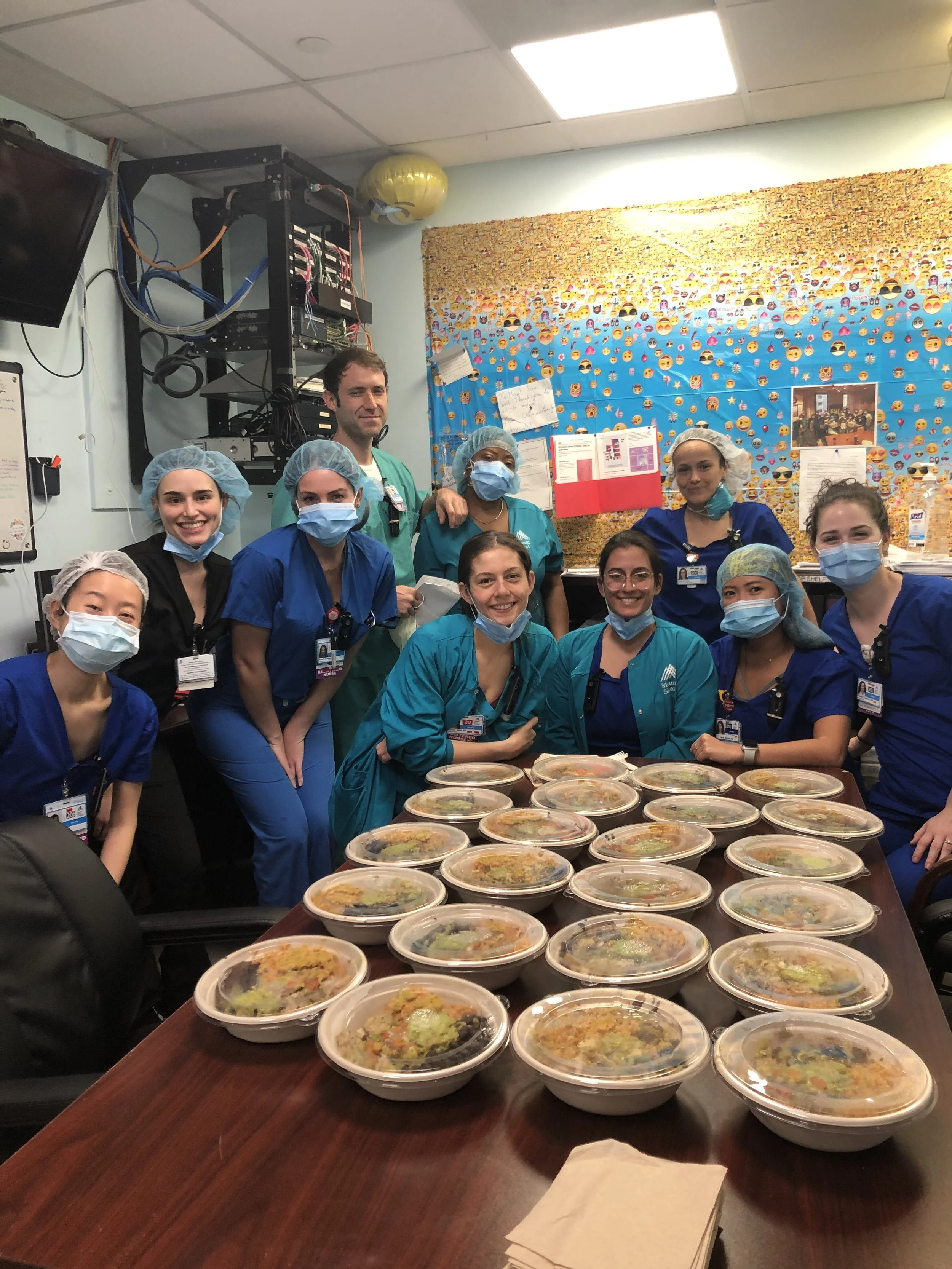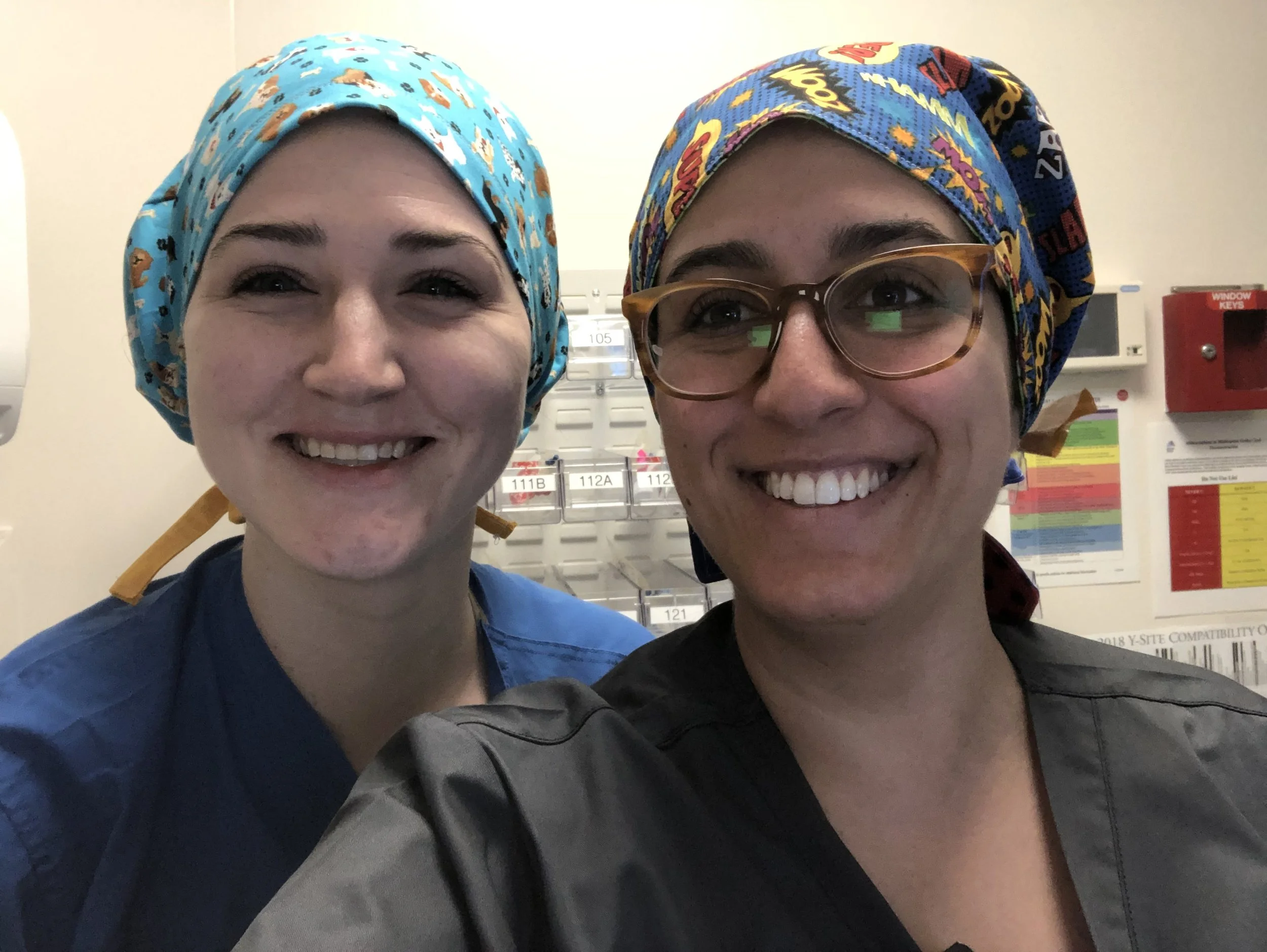How One Nurse Is Flattening the Curve at a Manhattan Hospital
Written by Kristen DeCaires Gall, MPH, PMP
The story below is the first of YMyHealth’s COVID-19 Stories from the Field series. We will continue to share personal stories from millennials who are essential workers, caregivers, and those close to them, as long as the pandemic continues.
Intensive Care
I’m based out of a college town in New Jersey, where many students and young professionals either commute to the hospital around the corner or take a 45-minute train ride to Penn Station into New York City (NYC). Saying we are a hot spot is an understatement. NYC and its surrounding boroughs have been called the epicenter of the COVID-19 spread in the United States. As I write this story, the current number of NYC cases (not the state, the city) exceeds 155,000, with over 18,000 recovered and almost 12,000 deaths. As part of the larger picture, NYC’s death toll is over one fifth of the entire country.
But this story isn’t about me, it’s about my friend Kelsey Lynch. She’s a registered clinical nurse at a hospital in New York City. Even before the pandemic, her job was not for the faint of heart. She commutes to Manhattan three to four days a week for her usual 12-hour shift, during which she cares for patients in a progressive-care unit. This area of the hospital is essentially a step below the intensive care unit (ICU). It’s usually reserved for patients who recently had surgery or who are vulnerable due to infections that require monitoring. These types of cases are severe, but usually routine and far from critical.
Since the COVID-19 pandemic, work looks much different for Kelsey. Her unit has now been completely converted into ICU beds. Her hospital lobby is now full of pop-up beds for more stable patients so they don’t have to be in the same wards as COVID ones. Her workweek has gone from three days to a five- or six- day week of 12-hour shifts. The population of patients she now manages needs a completely different kind of care. The severity of their conditions are much more complex and require more resources.
Knowledge about COVID-19 is incomplete right now, with so many unknowns about how the disease progresses. Yet, Kelsey and her team are expected to work over full capacity operating with that limited knowledge.
“People need to know how scary this is. There’s no way to know how it will affect you. We’re seeing people [with COVID] who have had no prior health history, or who have a very minor condition, someone who has never been hospitalized here. I even have a patient who is dying on our floor who is a respiratory therapist,” Kelsey said.
“People are still taking it lightly, and it’s scary to watch. Patients are fine, and then they get sick very quickly. They require more medicine and more oxygen,” she added.
The influx of COVID patients requires Kelsey’s team of nurses to deliver a level of care at an intensity that their team was simply not designed for. While she has been a nurse for many years, several of her colleagues are not more than a year or two out of school. They are scared for themselves and scared to hurt patients. They are working with new protocols and new medications under constant pressure.
Kelsey and her team take a lunch break.
“I’m used to unstable patients, but in a different state. They’re not acutely decompensating the way they are now,” Kelsey said. “We’re having to medically sedate patients to relax and rehab their lungs. With that can come a drop in blood pressure, so we give them additional medications so that their blood pressure will stabilize. Normally, we get patients on ventilators, but they’re surgically implanted. But now, we’re getting patients who are orally intubated on ventilators and are more acute.”
She added that she and her fellow nurses are also proning patients now— flipping patients on their belly, and then flipping them back after 16 hours—something they rarely did before.
Thankfully, Kelsey’s hospital so far has the medical supplies and gear they need, but they are encouraging staff to be more conservative with usage. For instance, while there isn’t a gown shortage, nurses are now being asked to change gowns between rooms instead of after every case. As I found out, gowns are one of the main ways that ICU nurses can self-contaminate. She said that she’s lucky; other hospitals are asking nurses to reuse their gowns for multiple shifts.
Kelsey’s hospital has provided support for their staff, though not all their extra measures make complete sense. Some of the extra support is positive: her hospital arranged for nurses to park for free so they don’t have to take public transportation. And unlike other healthcare facilities, they’re getting hazard pay and unlimited overtime.
At the same time, her hospital isn’t testing their staff even if they have COVID symptoms. Presumptive positive staff are told to log their symptoms, and four days after they subside, they’re asked to return to work. At that time, the hospital requests that they get a blood test for COVID antibodies as part of the hospital’s clinical trial.
Ultimately, COVID-19 will put an extraordinary emotional and mental toll on our healthcare workers. Like many nurses, Kelsey gets attached to her patients. But this crisis has forced her to cope in new ways.
“In the beginning, I was way more emotional about work than I have ever been. We lost a 32-year old. We just had to intubate a 25-year old pregnant woman. Not a lot of employees have passed that I know, but people we have known on our floor have died.”
Kelsey (right) with one of her fellow nurses at work.
Living with a supportive partner helps Kelsey deal with the stress.
“Some people are going home alone. A lot of the young girls I work with are going back to empty apartments. Some are so lonely and so scared since many of their roommates have gone home to their families,” Kelsey says. “I live with a solid partner, and we have two bedrooms, so I’m able to sleep separately to help minimize risk. But he was actually sent home from work at a new job when they found out I was working in a COVID unit.”
With all the chaos and heartbreak COVID has brought to our area, there are occasional bright spots that we’ve both held onto recently. With shared tragedy often comes a sense of community, and many businesses in the greater NYC area have stepped up to serve basic needs to essential workers.
“I have not brought food to work once. Fuel the Fight has been setting up meal deliveries for us almost every day. Hidden Grounds has donated coffee for us, and now they have a program through their store where you can donate a carafe of coffee for nurses at a New Jersey hospital. One of my colleagues is knitting buttons that we can hook our masks to those instead of our ears. It’s cool to see how resilient people can be and how creative they can be,” she says.
The number of patients that Kelsey has seen in the last month is unprecedented. And while some patients succumb to the virus, more ultimately recover. And often, at her hospital, they get an appropriate send-off back home to their families.
“We’ve discharged about 3,500 patients in a month,” Kelsey says. “Thankfully, people are getting discharged and going back home, not going back to a nursing home where things have been really bad.”
As each patient who the healthcare team discharges leaves the hospital, Kelsey and her fellow nurses play the song, Here Comes the Sun. It marks a success in fighting the virus and a bright, new beginning for each patient on the road to recovery.
But she knows that for every discharged patient that her team celebrates, there have been patients whose lives the virus has cut short, despite what medicine can offer.
“I’m worried that when things start re-opening, people will forget how serious this was,” Kelsey says.
The story is the first of YMyHealth’s COVID-19 Stories from the Field series. We will continue to share personal stories from millennials who are essential workers, caregivers, and those close to them, as long as the pandemic continues.
Subscribe to the YMyHealth newsletter to stay up to date on everything that’s health-related for millennials!





